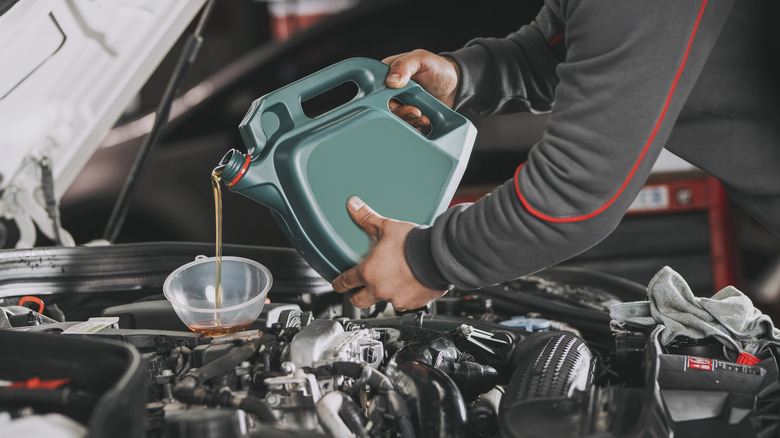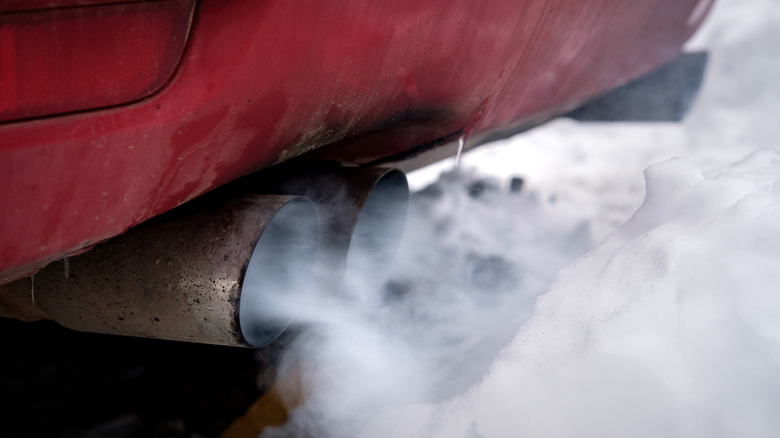What Happens To An Engine When You Overfill It With Oil?
Fresh motor oil is an internal combustion engine's best friend. It's more than just about lubrication, as the engine oil collects dirt, metal particles, and other harmful contaminants while acting as a coolant to keep everything running smoothly. Since oil is the lifeblood of any gasoline or diesel engine, it's generally a bad idea to skimp on oil changes since doing so will harm your engine and pollute the environment.
However, choosing the right motor oil is equally important as adhering to factory-scheduled oil changes. Auto manufacturers generally recommend changing the oil and oil filter every 5,000 to 7,000 miles, using high-quality mineral, semi-synthetic, or fully synthetic oil with the proper classification.
After determining the kind or type of motor oil, knowing how much to put inside the engine is critical, and the numbers vary depending on the size, type, or engine configuration (V6, V8, V10, etc.). There's no guesswork involved since overfilling any engine with oil would eventually lead to costly repairs.
What are the consequences of overfilling the engine with oil?
In the right amount, fresh engine oil will better protect against excess friction during cold starts while offering maximum lubrication during extreme hot weather. Every gas or diesel engine can only accommodate a prescribed amount of oil, and pouring too much into the crankcase will cause the oil to foam or thicken, essentially disabling the oil's ability to flow in hot or cold operating conditions.
If the oil can't flow, it cannot pass through the tiny oil passages to lubricate the valvetrain, combustion chamber, pistons, and other internal components. It's no different from vigorously churning milk and turning it into butter, and a thicker, buttery consistency is not what an engine needs to prevent it from breaking down.
Moreover, more oil means raising the oil pressure unnecessarily, which leads to leaky gaskets and oil seals. If your vehicle suddenly has an illuminated check engine light after an oil change and has symptoms like blue or white smoke, subpar performance, or unusual engine noises, it could mean the engine is drowning in oil.
What should I do if my car engine has too much oil?
The surefire way to know if your car's engine has too much oil is to inspect the dipstick, and it's best to do it while the engine is hot or warm. Park the car, open the hood, and locate the oil dipstick. Pull it out, wipe off the end using a rag or paper towel, fully insert the dipstick back into the hole, and pull it out again to get an accurate reading.
The end of the dipstick has Low (L) and High (H) indicators, and the correct oil level should be between L and H. Anything higher than H is an overfill scenario, and it's best to drain the excess oil before it froths inside the crankcase. The best recourse is to drain and refill the engine with fresh engine oil, but some backyard mechanics use siphons to suck the oil from the dipstick hole. However, oil is cheaper than replacing damaged engine internals, and we recommend draining all of the oil instead of sucking out the excess.
Make it a habit to inspect the oil level using the dipstick at least once a week or before embarking on a lengthy road trip. Of course, adhering to regular oil changes is a must to maintain a healthy, smooth-running, and clean-burning engine.


